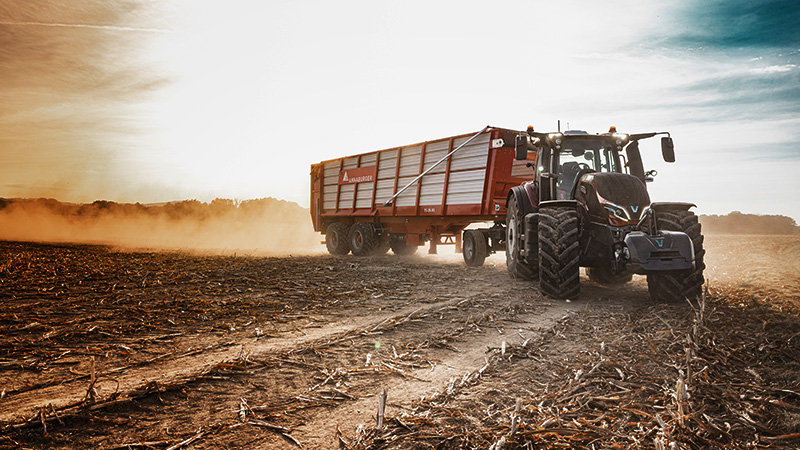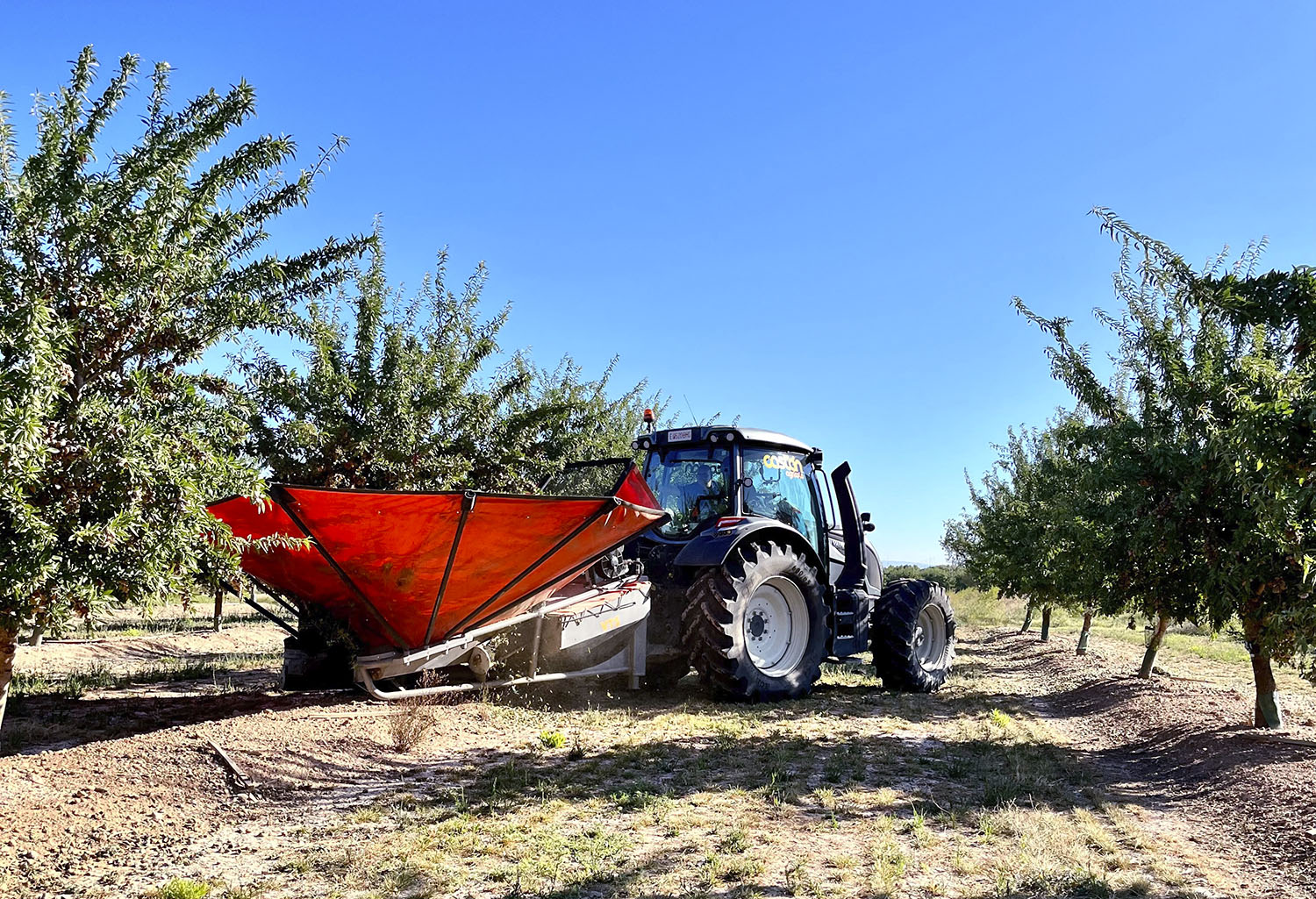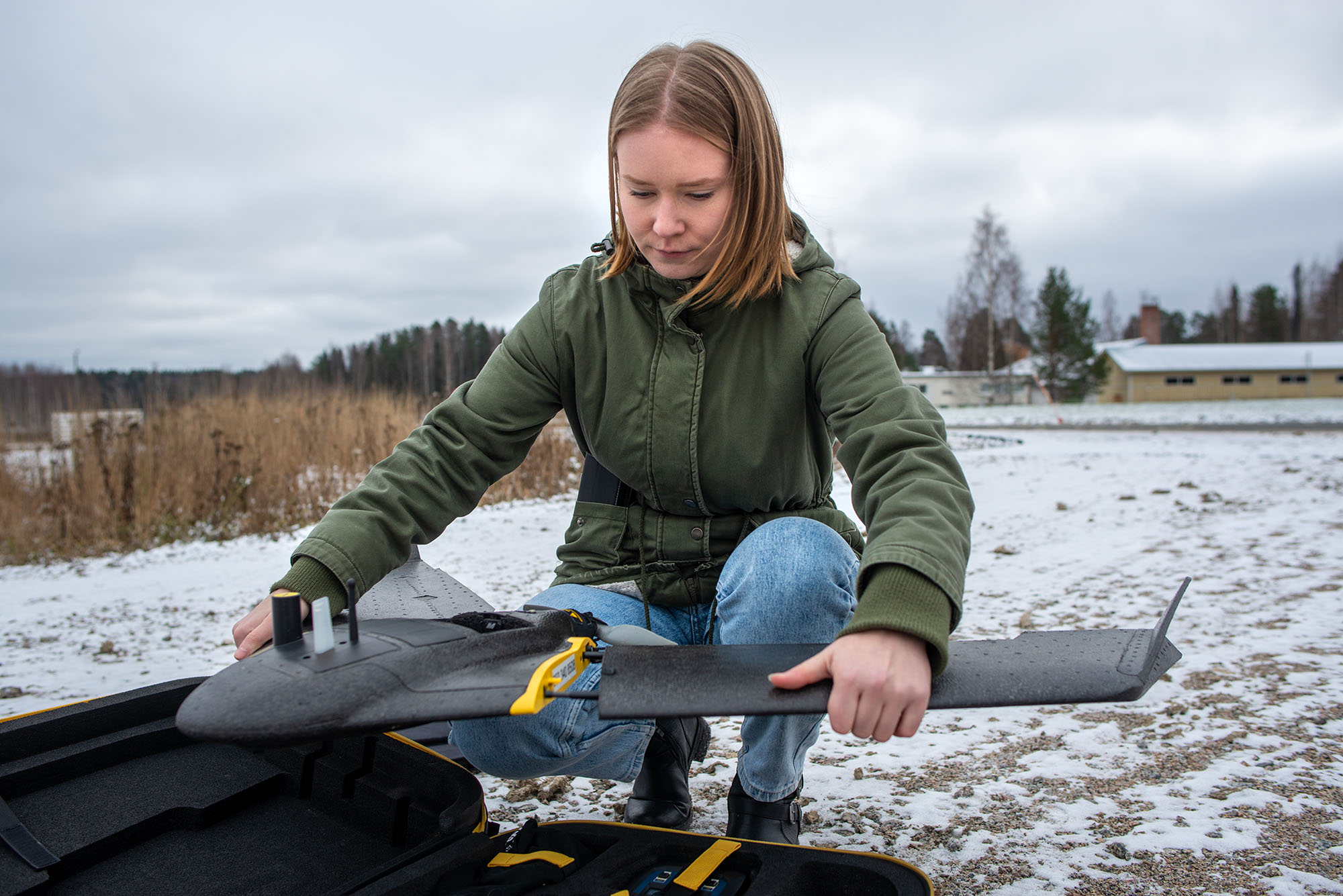Danish research on tyre pressures
A central tyre inflation system and VF tyres are an excellent combination that pays off in better yields, lower fuel consumption and time saved. In a recent Danish study, cultivation was carried out with tyre pressures of only 0.6 bar, which saved fuel by approximately one litre per hectare.
The test tractor had Bridgestone VF 710/70R42 BS VT tyres at the rear and VF 600/70R30 BS VT tyres at the front. In the test, a potato field was cultivated after harvesting using an Amazone 5-metre Cenius cultivator. The tractor had additional ballast of 1.8 tonnes at the front and wheel weights at the back. The weight distribution of the tractor was 52:48 in place and an ideal 42:58 when pulling. The cruise control was set at 15 km/h, and the highest speed achieved was 13 km/h, which means the tractor was delivering full power all the time.
The CTI tyre pressure control system can be seen at the end of the axle.
In autumn 2023, Valtra conducted a very practical test in Denmark using a Valtra Q305 tractor, Bridgestone VF (Very High Flexion) tyres, a tractor installed CTIS (Central Tyre Inflation System), and a 5-meter Amazone Cenius 2TXSuper cultivator. Fuel consumption, work speed and soil compaction were measured with three different tyre pressures: 0.6, 1.6 and 2.0 bar.
“Farmers can always change the tyre pressure on the road and in the field even without a tyre pressure control system and with regular tyres, but they seldom do. The advantage of a CTIS is that it can be used from the tractor cab is that makes changing tyre pressures so easy. VF tires, in turn, enable a large tyre pressure adjustment margin,” says Keld Andersen, Agricultural Product Manager at tyre manufacturer Bridgestone.
Tyre pressures as low as 0.6 bar may sound dangerous, but with VF tyres they work well. The tyres were closely monitored in the tests, and they did not slide at all or collapse, for example in turns.
A tyre pressure of 0.6 bar speeds up work by about 1,8 percent compared to 1.6 bar.
Jens Christian Jensen, who organised the test, and Sophie Rothaus, who operated the tractor, were impressed by the effects of optimal tyre pressures on fuel consumption, work efficiency and soil compaction.
Less fuel, time and compaction
In field work, tyre pressures of 0.6 bar compared to pressures of 1.6 bar save about a litre of fuel per hectare. Correspondingly, high pressure saves fuel when driving on roads, but the difference is smaller.
A tyre pressure of 0.6 bar speeds up work by about 1,8 percent compared to 1.6 bar, because there is less wheel slip. When driving on the field at a pressure of 0.6 bar, the soil is compacted to a depth of 52 centimetres, while at a pressure of 1.6 bar the soil is compacted to a depth of 63 centimetres. Compaction that occurs at a depth of more than 50 centimetres can be permanent, because at such a depth the soil is not broken by frost or tillage. If soil-compaction can be avoided, the field will produce a one percent higher yield per year, the average benefit is 21 euros per hectare.
“Many farmers get used to driving with the same tyre pressure all year round and for all tasks. As an agronomist, I can say that this is not the best way to use a tractor and tyres. High tyre pressures compact the soil and reduce yields,” says Jens Christian Jensen, who headed the research.
Text Tommi Pitenius Photo Valtra archive



